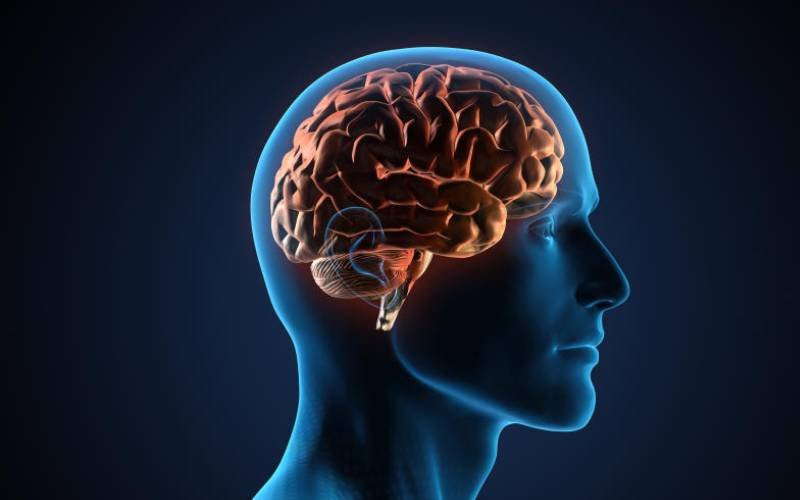
Several students at St Theresa Eregi Girls presented with joint pain and fatigue, requiring hospitalisation.
Their suffering gained widespread attention, drawing the concern of Kenyans who demanded swift intervention as the symptoms appeared to worsen, manifesting as 'paralysis'.
Parents and teachers breathed a sigh of relief when authorities announced that the girls were suffering from hysteria, as confirmed by tests conducted at the Kenya Medical Research Institute (Kemri).
As Kenya prepares to join the global commemoration of World Mental Health Day tomorrow, experts say this condition is more common among adolescents and warrants attention.
Dr Catherine Syengo Mutisya, a consultant psychiatrist, says hysteria is a psychiatric disorder in which a person exhibits physical symptoms with a psychological origin. Instead of verbalising their emotional distress, they manifest physical symptoms.
For instance, rather than saying they are sad, they may exhibit symptoms resembling a "fit," which might resemble epilepsy or a neurological issue.
"Typically, individuals experiencing hysteria express their emotional needs through physical symptoms," says Dr. Mutisya.
- KMA calls for action on intern mental health after Dr Obwogi's death
- Foggy living: Struggles of those trapped in mental ailments
- How noxious work environments are aggravating mental health crisis
- The silent struggles of men defiled in childhood
Keep Reading
Some of these physical symptoms may be ones they have observed in other people.
One may be more susceptible to experiencing hysteria if they have undergone some form of trauma, including childhood trauma, which could be physical, sexual, or emotional abuse.
Parental neglect can also increase the likelihood of developing this condition, as can having experienced a natural disaster or combat situations, which often leads to extreme anxiety about one's health.
Mutisya adds, "Any traumatic experience, perceived as such by a genetically predisposed individual without adequate psychosocial support, can serve as a predisposing factor for the development of psychiatric disorders like hysteria."
In some cases, a phenomenon known as "hysterical contagion" can cause groups of people to exhibit similar hysterical symptoms, which may be triggered by social or psychological influences.
In such instances, the initial person exhibiting the symptoms must have observed someone else displaying similar symptoms, such as the "shakes and weakness" (pseudo paralysis) witnessed in the Eregi secondary school.
In institutions with vulnerable populations, such as a boarding school environment, other susceptible students may mimic the symptoms of the initial patient (the first person to display the symptoms).
When hysteria is diagnosed within a group, Dr. Mutisya recommends separating individuals exhibiting symptoms from each other. Each person should undergo the necessary assessment and psychotherapy to address the emotional stress they are experiencing, and medication should be considered if deemed necessary.
"I may not have precise information about what occurred with the girls at Eregi, but I am aware that Kemri conducted tests to eliminate any other medical conditions."
"Everyone should be aware that the immediate step to take is to separate and address each of the girls individually because they shared a false belief (delusion) regarding their bodily functions," says Mutisya.
"Some of the girls may have been dealing with emotional distress and influenced each other in the presentation of their symptoms," Dr Mutisya adds, referring to the Eregi Girls students who were reported to have been hospitalised after displaying symptoms of hysteria.
Dr. Edith Kamaru Kwobah, also a member of the Kenya Mental Health Board, says although hysteria may manifest as neurological issues, in reality, there is no physical problem with the nerves.
Using the example of Eregi Girls, Kwobah said it's possible that one girl was stressed and began exhibiting hysteria, which then influenced other girls. "It's unlikely that all of them (the girls) were stressed at the same time."
Hysteria, she explains, can manifest with various neurological issues. Some individuals may complain of vision, walking, or hearing difficulties, while older individuals may report an inability to feel their hands or experience numbness.
She further elaborates, "The mechanism of hysteria is not entirely clear. Essentially, a person with hysteria seeks attention and recognition. It's a functional neurological disorder. There are no issues with the spine; it's a manifestation of the power of the mind," says Kwobah.
According to the experts, the diagnosis of hysteria begins with taking a comprehensive history of how the symptoms initiated and progressed. The order in which all the affected individuals in the group began displaying symptoms is also significant.
Enquiring about recent or ongoing stressors, major life changes, loss, and trauma is crucial, adds Dr. Mutisya.
 The Standard Group Plc is a multi-media organization with investments in media platforms spanning newspaper print
operations, television, radio broadcasting, digital and online services. The Standard Group is recognized as a
leading multi-media house in Kenya with a key influence in matters of national and international interest.
The Standard Group Plc is a multi-media organization with investments in media platforms spanning newspaper print
operations, television, radio broadcasting, digital and online services. The Standard Group is recognized as a
leading multi-media house in Kenya with a key influence in matters of national and international interest.











